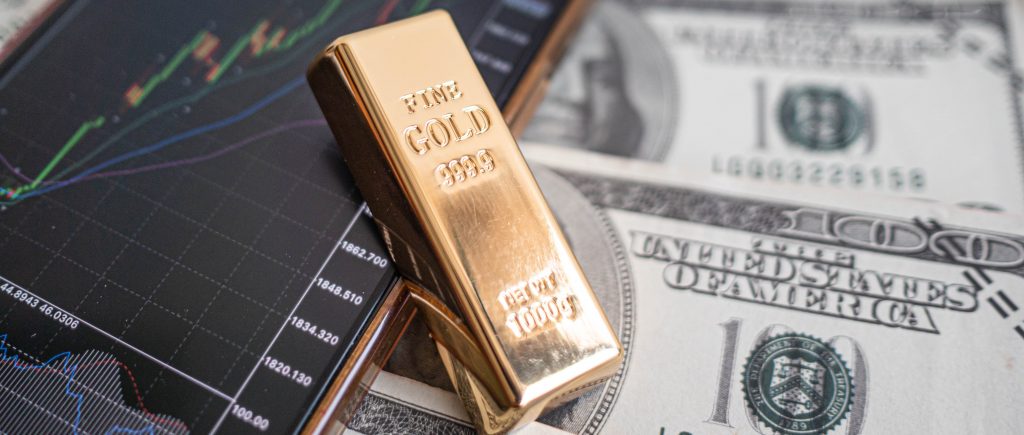Gold prices edged higher in Asian trading on Monday, supported by a weaker U.S. dollar and persistent geopolitical uncertainties. Investors turned to the precious metal as a safe-haven asset amid ongoing trade policy tensions and stalled Russia-Ukraine peace talks.
Spot gold increased by 0.3% to $2,865.69 per ounce, while April gold futures rose 0.9% to $2,873.59 per ounce as of 00:35 ET (05:35 GMT).
Tariff Uncertainty Weighs on the Dollar, Supporting Gold
The U.S. dollar weakened after President Donald Trump reaffirmed his plans for additional tariffs on China while maintaining 25% levies on imports from Mexico and Canada. However, comments from U.S. Commerce Secretary Howard Lutnick on Sunday suggested that final tariff levels would be determined on Tuesday, introducing uncertainty into trade markets.
Meanwhile, the breakdown of peace talks between Ukrainian President Volodymyr Zelenskyy and President Trump has cast doubt on any near-term resolution to the Russia-Ukraine conflict, further boosting demand for safe-haven assets like gold.
The U.S. Dollar Index slipped 0.4% during Asian trading, retreating from a recent two-week high. A weaker dollar makes gold more attractive to investors holding other currencies, adding upward pressure on prices.
Precious Metals Track Gold’s Gains
Other precious metals also advanced amid the dollar’s retreat. Platinum futures climbed 1.2% to $949.10 per ounce, while silver futures gained 0.7% to $31.73 per ounce, reflecting continued demand for safe-haven assets.
U.S. Economic Data Reinforces Mixed Policy Outlook
On the macroeconomic front, U.S. consumer sentiment fell 0.2% in January, marking its first decline in nearly two years. The Atlanta Federal Reserve revised its first-quarter GDP growth projection to 1.5%, down from 2.3% in the prior quarter, fueling expectations of potential rate cuts by the Federal Reserve.
However, inflation remains a concern. The Personal Consumption Expenditures (PCE) price index, the Fed’s preferred inflation gauge, increased by 0.3% in January, maintaining its pace from December. This suggests that the central bank may need to keep interest rates elevated for longer than markets anticipate, creating uncertainty for gold’s longer-term outlook.
Copper Inches Higher on Strong Chinese Manufacturing Data
Copper prices saw a modest uptick, benefiting from the weaker dollar and stronger-than-expected manufacturing data from China. The Caixin Purchasing Managers’ Index (PMI) climbed to a three-month high in February, signaling resilience in the world’s largest copper consumer.
On the London Metal Exchange, benchmark copper futures rose 0.3% to $9,985.70 per ton, while April copper futures edged slightly lower to $4.5595 per pound.
As markets await further clarity on U.S. trade policy and Federal Reserve interest rate decisions, gold’s role as a hedge against economic and geopolitical uncertainty remains firmly in focus.
 Noor Trends News, Technical Analysis, Educational Tools and Recommendations
Noor Trends News, Technical Analysis, Educational Tools and Recommendations





